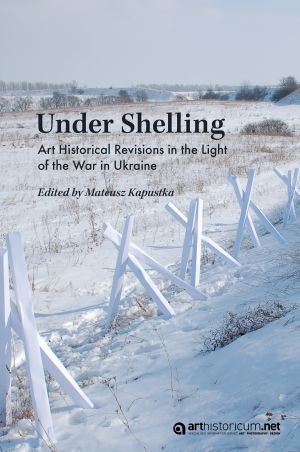Zitationsvorschlag
Versionen (Buch)
- 2025-06-03 (2)
- 2025-05-06 (1)
Lizenz (Kapitel)

Dieses Werk steht unter der Lizenz Creative Commons Namensnennung - Weitergabe unter gleichen Bedingungen 4.0 International.
Identifier (Buch)
Veröffentlicht
Versionen
- 03.06.2025 (2)
- 06.05.2025 (1)
Regarding the War in Ukraine
The foreword briefly presents the scope of the volume. This ranges from analysis of the visual engagement of Ukrainian art and activism against present-day Russian aggression to elaborations on art historiographical projections in the 19th and 20th centuries regarding regional identity and the emerging culture of national and regional museums and collections in Ukraine. A link between the two areas of study is provided by the complex notions of violence and resistance: While art and popular imagery now react to the extreme violence on the front lines and in cities and villages currently under shelling, the long history of Ukrainian sovereignty in preserving and studying cultural heritage despite Moscow’s imperial appropriation strategies delivers insight into long-term historiographical violence and the means of determined resistance to it.
Regarding critical approaches to the issue of visual violence in photography, the foreword also problematizes the inescapable iconic trap one falls into when confronted with contemporary photographic images of suffering: The beholder’s powerlessness in front of the scenario of pain and death. The text briefly shows how – in contrast to the non-continuity and static distortion presented by photographs of violence, suffering, and agony, which necessarily depict processes as framed singular acts and gestures – the immediacy of Ukrainian artistic response to the Russian aggression offers an antidote to powerlessness: Art provides iconic sublation through the suspended animation of violence, thus evoking the realm of emphatic communication instead of bare demonstration. In these terms, the foreword points to the issue of the neighborhood as a new category of reception and visual response to the war from an inherently domestic perspective: The depicted ‘look from the window’ that equips the picture/video plane with a personal framing at the very threshold between the course of recorded events and the image-maker’s reception as embedded in the image. This new kind of image establishes an element of mediated community in visual witnessing by introducing an emphatic modality in artistic response to the war. It presents a sustainably reflexive alternative to the explicit but mute content of images showing the bold violence of warfare.







